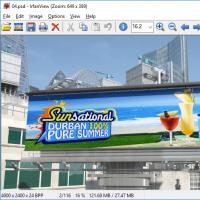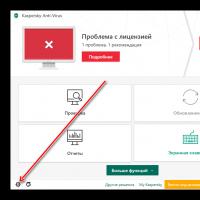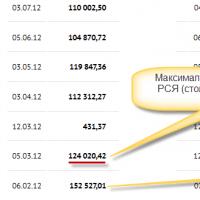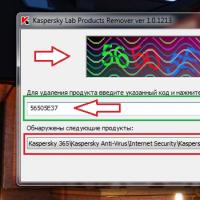How to Extend Laptop Battery Life: Practical Tips. How to Extend Laptop or Phone Battery Life 10 Ways to Extend Laptop Battery Life
The laptop battery is equated by manufacturers to consumables, and their average service life is 2 years (from 300 to 800 charge / discharge cycles), which is much less than the service life of the laptop itself. What can affect the development of the battery's resource and how you can extend its service life, we will discuss below.
How to make your laptop battery last longer
All modern laptops use two main types of batteries:
- Li-Ion (lithium-ion);
- Li-Pol (lithium polymer).
Modern laptops use lithium-ion or lithium-polymer batteries
Both types of batteries have the same principle of accumulating electric charge - there is a cathode on an aluminum substrate, an anode on a copper one, and between them there is a porous separator impregnated with electrolyte. Lithium-polymer batteries use a gel-like electrolyte, which slows down the process of lithium decay, which increases their average working life.
The main disadvantage of such batteries is that they are subject to "aging" and gradually lose their capacity reserve. This process is accelerated by:
- overheating of the battery (temperature over 60 ºC is critical);
- deep discharge (in batteries consisting of a bundle of 18650 cells, the critically low voltage is 2.5 V and below);
- overcharge;
- freezing of the electrolyte (when its temperature drops below the minus mark).
As for the charge / discharge cycles, experts recommend not to allow the battery to be completely discharged, that is, to recharge the laptop when the battery charge indicator shows a mark of 20-30%. This will increase the number of charge / discharge cycles by approximately 1.5 times, after which the battery will begin to lose its capacity.
Also, to increase the resource, you should adhere to the following recommendations:
- If the laptop is used primarily in stationary mode, then the battery should be charged to 75–80%, disconnected and stored separately at room temperature (10–20 ºC is ideal).
- When the battery is completely discharged, charge it as soon as possible. Long-term storage of a discharged battery significantly reduces its capacity, and in some cases even leads to blocking of the controller - in this case, the battery will completely fail.
- At least once every 3-5 months, you should completely discharge the battery and immediately charge it to 100% - this is necessary to calibrate the controller board.
- When charging the battery, do not run resource-intensive applications in order not to expose the battery to overheating.
- Do not charge the battery at low ambient temperatures - when moving to a warm room, the voltage on a fully charged battery will increase by about 5–20%, which is an overcharge.
But with all this, each battery has a built-in controller. Its task is to prevent a decrease or increase in voltage to critical levels, to adjust the charge current (to prevent overheating), to calibrate the "cans". So it's not worth bothering too much about the above rules - many of the nuances have already been provided for by the laptop manufacturers themselves, so that the use of such technology is as simple as possible for the consumer.
All batteries have their own lifespan. With the exception of lithium-polymer (Li-Pol) batteries, which are found in Apple MacBooks, regular laptops are equipped with lithium-ion (Li-Ion) batteries. Lithium-ton laptop batteries are rated for approximately 400 charge and discharge cycles (2-3 years with “typical” use). A battery can lose its original performance due to a number of factors. For example, due to the "old age" of the battery or due to the high temperature in the room. Improper use is mainly the cause of battery failure or capacity reduction.
To prolong battery life you need to:
1. Infrequent but regular battery operation.
If the battery lays on the shelf or you just rarely use it, the active substances in the battery begin to change their properties, which leads to the “aging” of the battery.
2. If you know that you will not use the battery for several days, discharge it to 10%.
A complete discharge of the battery is necessary if you will not use it in the near future, otherwise, over time, the battery will lose its characteristics faster.
Recommendations: For MacBook owners, this point applies most of all, tk. in these notebooks, the battery is designed for continuous and frequent use, otherwise the battery capacity will quickly degrade. Calibrate your battery once a month (visit apple.com)
3. If you need to store the battery for a long time, charge it 50%.
This is suitable for cases where you need to store the battery for a month or more. With such long storage periods, a full charge or full discharge of the battery can seriously damage the battery, so when buying laptops, phones, and others, you are given a device with 50% battery charge.
4. Eliminate the complete discharge of the battery.
Do not drain the battery until the laptop shuts down by itself.
The system warns of a discharge and when it reaches a critical 7% charge, either turn off the laptop or connect to a power source. A full discharge puts additional stress on the battery.
5. Charge the battery fully.
Avoid partial charging of the battery if possible. The set number of battery charging and discharging cycles does not depend on whether you fully or incompletely charged the battery, it depends on the number of charges.
6. Charge and discharge the battery once a month.
If you constantly work "from the network", carry out this procedure at least once a month. Such prophylaxis is necessary for any battery.
7. Protect your laptop from exposure to high temperatures.
To maximize battery life, let your laptop's cooling system run as efficiently as possible. Avoid placing the laptop on a soft surface, such as a rug or pillow, and get out of the habit of using the laptop by holding it on your lap. The battery is already very close to components that generate a large amount of heat and does not need unnecessary overheating.
Recommendations: Place the notebook computer on only on a flat and hard surface (such as a table). Provide sufficient space for air to enter the cooling system. Provide a “gap” between the laptop case and the surface (usually standard laptop “legs” are sufficient). In the summer, use your laptop very carefully (I am silent about the summer that was this year in Russia :)), protect it from overheating and direct sunlight.
8. Save your laptop from cold temperatures.
This is especially true for us, with our winters. Low temperatures are harmful to almost all components of laptop components: both for the battery and for the display. Even if you carry your laptop in your bag, try to be outdoors as little as possible, because a few minutes of exposure to low temperatures is enough to "freeze" the laptop.
9. Do not use standby mode.
Many people like not to turn off their laptop or computer, for example, at night. do not want to wait for the system to boot from scratch, open the same programs, etc. Standby mode, albeit in small quantities, consumes energy and can still "warm" the battery.
Recommendations: Use hibernation or hibernation. This mode is completely independent of power supply and provides a quick start of the laptop with all applications from the previous session. The laptop is completely turned off, all data from the RAM is automatically transferred to the hard disk, and when turned on, everything is restored back.
10. Unplug the laptop when it is turned off.
If the battery is charged and the computer is turned off, it can continue to charge in trickle charge mode. Of course, manufacturers promise that when the battery is charged, charging will automatically turn off, but this is not always the case.
11. Do not buy a battery "for the future".
The battery starts to "age" from the moment it is released. If your battery, nevertheless, has outlived its usefulness, then buy a new one, and from an official manufacturer. Don't buy a "Chinese" battery, you won't save anything here.
These tips, almost all, are suitable forLi-Ion batteries for any devices. For example, mobile phones, players, etc.
Holds the charge less and less.
To maximize battery life and keep your device running as long as possible during the day, follow these 7 tips.
Battery operation
To get started, you need to know some useful facts about laptop batteries.
* Battery - consumable, i.e. if it holds a little charge or breaks down, then you need to buy a new one.
* The laptop battery comes with a much shorter warranty since it ages, changes its original qualities over time, being influenced by a large number of factors, including the temperature in the place where it is most often used.
* To date, all laptop batteries are lithium-ion (Li-Ion). Their lifespan is usually measured in charge / discharge cycles. On average, conventional batteries are rated for 300 such cycles. It should be noted that one cycle is considered as a full charge of the battery, and a partial charge.

© amnarj2006 / Getty Images
* Theoretically, the average laptop battery should last about 2 years., sometimes this figure reaches 3. Next, the battery needs to be changed. But in practice, it happens that the battery has to be changed more often.
* Apple laptops have Lithium Polymer (Li-Pol) batteries, which in theory can hold out at a good level for up to 5 years, because they are designed for 1000 charge / discharge cycles. But in practice, this figure is usually less.

© picturesd / Getty Images
* Most often, batteries fail early due to improper use.
How to increase laptop battery performance
Here are some helpful tips for using your laptop battery:
1. Work on the laptop from the mains (while removing the battery), but do not forget to sometimes work on battery power.

© ceazars / Getty Images
When you are at home and use a laptop instead of a stationary computer, and you do not take it with you very often, then it is worth use from the network when doing this, remove the battery.
When you need to take your laptop with you, reinsert the battery. But it is worth noting that the battery consists of active chemicals, which means that the battery does not need to be kept "idle" for a long time otherwise it will age and its shelf life will be shortened.
While the battery is not working, it will age. It should be fully charged and discharged at least once every 5 days.
* You also need to be aware not to remove and insert the battery while your laptop is on. It must always be turned off before such action.
How to properly charge your laptop battery
2. For longer battery life, do not charge more than 80 percent and do not let the charge drop below 20 percent.
* When you sit down at the laptop and connect it to the mains, while the battery is inserted, make sure that the charge indicator did not rise above 80%. When you reach this mark, turn off your laptop, remove the battery, and turn your computer back on.

© ipopba / Getty Images
* When you decide to take your laptop with you, unplug it and insert the battery.
* When the laptop is running on battery power and the battery charge indicator shows between 10% and 20%, turn off the laptop and do not use it until there is a power outlet nearby.
There is a lot of hassle, but if you want the battery to last longer, then you should listen.
If the battery is completely discharged, the laptop turned off, and you did not turn it on for a couple of days, then the battery may lose its ability to charge, and you have to replace it.
These batteries love to work.

© rookiephoto19 / Getty Images
There are some peculiarities associated with MacBook laptops. They should not be left out of work for a long time. If the laptop is not turned on for several days, the battery capacity may drop significantly.
But if you turn on the laptop and work on battery power, then soon everything will be restored. Such laptops must be fully charged and discharged at least 3 times a week... Otherwise, the battery capacity will decrease and it will be more difficult to recover the battery.
* Important: it is worth to calibrate the battery at least once a month... This process is some kind of battery tuning, and he detail described on the official website of the company Apple.
3. Place the notebook on a firm, level surface and do not block the heat dissipation openings.

© Svetl / Getty Images
Temperature is the battery's biggest enemy. Both high and low temperatures severely damage battery performance and reduce performance.
What should I do if my laptop gets warm?
Avoid keeping your laptop on a sofa, blanket, or other soft surface when it is running, because:
* Such a surface worsens heat dissipation from special side gaps and the laptop heats up more, which has a bad effect on the battery.
* No free space at the bottom of the laptop. When we place it on a table, the legs of the laptop create a small gap, with the help of which the laptop is cooled. When he is on the couch or pillow, the computer gets very hot - its bottom can heat up to 50 degrees, and even more inside.

© ALLVISIONN / Getty Images
There is very little space inside the laptop, all the parts are almost like a sprat in a tin can. Because of this inside everything heats up quickly especially the processor and video card.
Despite the fact that each laptop has its own cooling system, although it removes heat, but able to warm up the entire laptop case.
All this has a bad effect on the battery, which is already heated, and if laptop gaming, i.e. has more efficient parts, then its temperature both inside and outside is even higher.
4. Do not expose the laptop to the sun or direct sunlight.

© seyyahin / Getty Images
From this the laptop will get even hotter, which is harmful to its battery.
Inside, its components heat up, and outside the sun heats up, which leads to heating of one case. up to a temperature of 60 degrees and above... This is not only harmful to the battery, but also to internal components (video card, processor, hard drive).
You can use special cooling pad for laptop... But if this is a stand that connects to a USB port, then it is better not to use this, since it will simply take the necessary energy from the laptop battery.
5. In winter, try to keep your laptop outdoors less (even if you are using a case or bag).

© IPGGutenbergUKLtd / Getty Images
The battery does not like extreme cold. If the outside temperature is freezing, then the laptop battery will only need about 15 minutes to cool down to air temperature.
Cold is harmful to all parts of the laptop, starting with the screen and ending with the hard drive, which can fail from severe frost, and you will no longer be able to get the necessary files from it without a specialist.
The battery quickly loses its capacity at low temperatures, and it may also stop taking charge altogether.
Into the frost it's better not to keep your laptop in the trunk of your car, the temperature there is much lower than in the cabin.
6. It is better to turn off the laptop and not use Stand By.

© KenEaster / Getty Images
Many people prefer to just close the laptop without turning it off, i.e. laptop goes into waiting mode... But this is only worth doing if you are not going to sit at your laptop for about two hours. Do not do this at night.
What is standby mode:
It should be noted that standby mode was created to stop the laptop from working for a couple of hours but it cannot be used as an alternative to shutdown.
When standby is enabled, the laptop the screen, hard drive and adapters are turned off, and the RAM and processor remain working, as well as to be able to exit this mode, keyboard and touchpad.
In short: the laptop still works in standby mode, all of its components are powered, including the battery. In addition, the computer generates heat.
* If you still do not really want to wait for the computer to boot from scratch, use hibernate instead of hibernate.
What is hibernation:
In this mode, the laptop writes all data from RAM to the hard disk, followed by its complete shutdown.
When you turn on the laptop, the RAM data is transferred back - from the hard disk to the RAM and your computer boots quickly and accurately just like you left him, with all open windows and programs.
* When using sleep mode it is important to reboot the laptop at least once every 3 days. Thus, his system will not be filled with a large amount of unnecessary data, and the computer will work without failures and brakes.
7. Remember to unplug your laptop when not in use.

© mai_bond007 / Getty Images
Theoretically, when the battery is fully charged, the charging mode should be turned off, but in reality this does not happen, and the battery continues to charge, but already in "compensation charge mode".
Continuing to charge after 100% will quickly wear out the battery. To avoid this, unplug your laptop from the electrical outlet.
Where to buy laptop battery

© Tomasz Majchrowicz / Getty Images
If it's time to replace your laptop battery, then it is better to contact the store where you bought the laptop.
You can also find out where you can buy a battery for your laptop. on the official website of the manufacturer... All laptop manufacturers post information on where to buy a suitable battery.
Batteries in devices such as laptops, smartphones, cameras and others do not have a very large capacity, as a result of which this is not always enough even for a day. With increased work, the discharge increases even more. Today's laptops last 4-6 hours on average, so they have to be charged all the time. The same applies to smartphones. So how to increase laptop battery life?
Modern laptops are undoubtedly better than their predecessors, which means that the user does not have to plug the power supply into the outlet more often than before. Now there are ultra-portable devices that last up to 14 hours or more.
Nevertheless, the battery loses its capacity over time, but after how long it will happen and how intensively it will lose it depends on the quality of the production of these batteries. In addition to the user's laptop operation, the following key factors affect battery life:
- Power parameter settings;
- The number of applications running in the background;
- Room temperature.
The good news is that we don't have to put in a lot of effort to sort out the above factors. Setting up power modes is very easy, closing background programs too. To keep the room cool, just check it.
Anyway, let's get it straight on Windows 10 devices.
Use Performance Tuning in Windows 10
The first step in extending battery life is special power settings. All of them have been known since the days of Windows 7. There are several power modes, if we consider older versions of Windows - these are power plans. There is a balanced mode, energy saving and high performance. In any version of this system, you can make your own power scheme.
In Windows 10, you can do the same, but there are easier settings. Click on the battery icon on the taskbar. A window with parameters and a slider will pop up. Here we have 4 modes of operation available - Saving charge, Improved battery, Optimal performance, Maximum productivity.
You just need to set the slider to the desired position.
Disable unnecessary features and enable airplane mode
While writing an article, you may not need notifications at the moment, which usually appear when a message comes from social networks or in the mail. To prevent these factors from distracting the user, you must completely close these applications. It is a good habit to use only one application.
So, use only one or two programs. For example, you write articles, listen to music from the browser, while working in Photoshop. When you write some text, for example, an article, then the Internet in most cases may not be needed. In this case, turn off Wi-Fi and even Bluetooth.
In addition to the above steps, another point will help eliminate unnecessary battery leaks - turning on airplane mode.
Close programs that are wasting a lot of battery
Above, I said that you should close applications that are not in use. But there are many who work in the background. They run every time the computer is turned on, unless the user has configured autorun properly.
To find out which programs in Windows 10 consume the most battery power, do the following:
- Click on the battery icon and navigate to Battery Options.

- A window will open, which shows information about the charge consumption and the amount of time until the end of work. We need to go to the "See which apps are affecting battery life" option.

- The next window will already show information about specific programs.

There are display options by time period. By default, there are applications with consumption for the last 24 hours. If there is software that is currently working, but you do not use it, we can safely close it.
Now for the autoload. The parameter can be configured from the task manager, but not all processes are shown there, which means we will use third-party programs.
You can use CCleaner, but I use the Uninstall Tool to uninstall programs. There is a section called "Startup". Where can . This way you can limit background apps and save a little more battery power.
You can also close unnecessary processes, even system ones, but you need to know which ones to disable, as this will affect the operation of the system.
Changing graphics options
The laptop has a graphics module from NVIDIA and less often from AMD, and there is also an integrated Intel graphics processor - more economical. I am leading to the fact that you can customize with which graphics to run this or that program.
Powerful programs and games can be assigned to a high-performance NVIDIA processor, and all other trifles to an integrated processor.
Battery health check and support
Most laptops are now equipped with lithium polymer batteries (), which do not require much maintenance, unlike in the past. Thanks to the built-in software, there is no need to engage in activities such as calibration and no need to fear that a full discharge or charge will damage the battery.
However, care must be taken when heating the device. Heating always negatively affects not only the internal components, but also the battery. Dust and dirt are the main cause of overheating, so you need to carefully disassemble the laptop and clean all the dust. In particular, we clean the ventilation grill and coolers. You can use a brush and vacuum cleaner, but be careful. If you have a can of compressed air, use it.
Another point - never place the laptop on a warm surface or pillow and blanket. This often prevents the system from cooling. Therefore, we put the device only on a hard surface, and if there is a cooling board, even better.
Nevertheless, sooner or later the battery will lose its charge more and more, and you will notice this when the operating time is less than an hour. In this case, you have two options - keep the power supply plugged in forever, or replace the battery with a new one.
Purchase a backup power option
This point comes from the previous one. If your battery is still more or less alive, but the charge is not enough for your needs, then purchase additional power.
Of course, this is suitable for a person who is constantly on the road, and there is nothing to charge the device with. Therefore, we order a new battery on the Internet. Best of all from the manufacturer.
By the way, if you have problems with recharging, you can always purchase an external portable battery (PowerBank). There are power banks not only for smartphones. On the Internet, you can also find for laptops with a capacity of up to 50,000 mAh. The set includes attachments for different battery sockets. They are also suitable for smartphones and tablets.
How to extend battery life by other means
There are a couple more ways to increase battery life, and now there will be a small list:
- Disabling the network adapter, ports, lowering the screen brightness.
- Increasing the amount of RAM - the more RAM, the less the system will access the hard disk, in turn, the economy increases.
- Change batteries every two years or more.
- Sometimes you can work on a laptop from the mains by removing the battery.
- Do not charge the battery more than 80% or discharge less than 20%.
- For batteries from Apple - they like to work a lot, which means point 4 is definitely not needed here.
- Do not place the device in direct sunlight as this will cause overheating.
- In winter, try not to keep your device in the cold, as batteries don't like it.
- Use hibernation or turn off the laptop completely. * Standby mode - with it the laptop works, albeit with minimal charge costs. However, the charge is still consumed, but why, if you are not using the device at the moment.
- Unplug the device from the mains when switched off. What for? After all, recharging is turned off at 100%, but there is an opinion that in reality the battery is still being charged, which gradually wears it out.
And a few more additional options can be found.
If you have an opinion on how to increase battery life or any other theories about their work, write about it in the comments.
If, as a result of long deliberations, you nevertheless decided to buy a laptop, then besides the joy for the purchase, you will most likely experience a respectful attitude towards a new thing, at least at first. Laptops are very easy to use and compact, as well as stand-alone. And the autonomy of their work is determined by the batteries for laptops. What is their service life and how can it be extended?
Life time
How much the native battery will work will depend on the mode and nuances of operation. So, the battery life for laptops is determined, of course, by the mode of use of the gadget, as well as the temperature and humidity of the environment. So, how much the battery will hold a charge is determined by its capacity, which drops with each charge / discharge of the battery. And after a year, on average, the capacity decreases to about 80% of the original value. But if the laptop is operated in high or, conversely, low temperatures, then the capacity can be reduced to 70% of the original, even if the laptop is practically new.
Not the least recent factors affecting laptop battery life are, of course, the model of the laptop itself, as well as the system design and power management settings of a particular operating system.
 Since all of the above parameters may differ from user to user, it is impossible to name the exact number of years and months of battery life: for some, it lasts only six months, and for others, it works for 3-5 or more years. But in order to slow down the process of deterioration of the native battery and prevent its replacement, there are several tips for extending battery life.
Since all of the above parameters may differ from user to user, it is impossible to name the exact number of years and months of battery life: for some, it lasts only six months, and for others, it works for 3-5 or more years. But in order to slow down the process of deterioration of the native battery and prevent its replacement, there are several tips for extending battery life.
Is it possible to extend the battery life
Batteries can be of different types and there are slightly different approaches for them. Many older laptops are equipped with Ni-Cd or Ni-MH batteries. With them, no matter how hard you try, they still won't last long. The only thing you can do is just charge and discharge the battery completely.
 It's another matter if a Li-ion battery is used as a battery for modern laptops. It is for this type that there are a lot of tips that really work. True, there are some myths: for example, according to one of them, if you remove the battery from the laptop while it is running on AC power, the battery will last longer. The service life may change slightly, but problems from this method may arise. Imagine if the gadget is powered by the network, and you are doing important work at this time, then a voltage drop or a power outage will nullify all your efforts, since the device will simply turn off. But if a battery remains in the laptop, then this will not happen, i.e. he plays the role of an uninterruptible device here.
It's another matter if a Li-ion battery is used as a battery for modern laptops. It is for this type that there are a lot of tips that really work. True, there are some myths: for example, according to one of them, if you remove the battery from the laptop while it is running on AC power, the battery will last longer. The service life may change slightly, but problems from this method may arise. Imagine if the gadget is powered by the network, and you are doing important work at this time, then a voltage drop or a power outage will nullify all your efforts, since the device will simply turn off. But if a battery remains in the laptop, then this will not happen, i.e. he plays the role of an uninterruptible device here.
It is believed that buying a spare battery for your chosen model can save you some untimely trouble. But given the average service life of a native battery of 2-3 years, we can conclude that the purchased spare will only deteriorate. It is worth buying a new battery only after the old one has deteriorated, and you can do this directly without leaving your home at many sites.
Ways to Extend Battery Life
 To keep the battery life of newly purchased laptops longer, you can follow these guidelines:
To keep the battery life of newly purchased laptops longer, you can follow these guidelines:
- After purchasing a new laptop, you need to completely discharge and then recharge its battery several times, which optimizes its capacity.
- When you leave the device for a long time, do not leave it turned on - put it into sleep mode. And the gadget itself is able to transfer itself to this mode after a while: you just need to make the necessary settings. In this case, the battery will not discharge as much, and in the future, such regular actions will lead to a longer battery life.
- You can also reduce the active work time of the laptop hard drive. This can be done by regularly defragmenting the hard disk of the device. As a result, it will take less time to find the files you need, and, accordingly, less energy, and this will extend the battery life, if this rule is followed in a timely manner.
- The monitor settings also need to be optimized. Thus, the brightness of the screen can be minimized.
- Dust can also reduce laptop battery life. This may seem surprising, but the point is this. Dust from the environment collects inside the notebook as a result of the operation of the fans that cool the system. And when the layer of dust becomes larger, the system has to be cooled more intensively, which requires significant battery power consumption. Therefore, timely cleaning of the inside of the laptop from dust will prolong the battery life, but it is better to do this with the help of professionals.
- In the "Autostart" of a laptop, in addition to the operating system itself, there may be many other programs that the user does not need in any way, but they uselessly work in the background, consuming energy. Excluding unnecessary programs from autostart will reduce power consumption, reduce the number of discharge / charge cycles, and extend battery life.
And the last thing: if you will not use your laptop for a month or two, then it is better to remove the infected battery from it altogether.
 The best programs for reading and editing: do without Photoshop psd extension than open
The best programs for reading and editing: do without Photoshop psd extension than open Why is my phone charging slowly?
Why is my phone charging slowly? How to add a folder to an exception in Kaspersky How to add exceptions to a program in Kaspersky
How to add a folder to an exception in Kaspersky How to add exceptions to a program in Kaspersky Installing Kaspersky Security Center Installing the Administration Server kaspersky security center 10
Installing Kaspersky Security Center Installing the Administration Server kaspersky security center 10 How to take a screenshot on a computer: All possible ways How to take a screenshot of a photo
How to take a screenshot on a computer: All possible ways How to take a screenshot of a photo Screenshot - what is it and how to make a screen Ways to take a screenshot on a computer
Screenshot - what is it and how to make a screen Ways to take a screenshot on a computer Free renewal of the Kaspersky Anti-Virus license Suspension of protection from Kaspersky Gadget
Free renewal of the Kaspersky Anti-Virus license Suspension of protection from Kaspersky Gadget